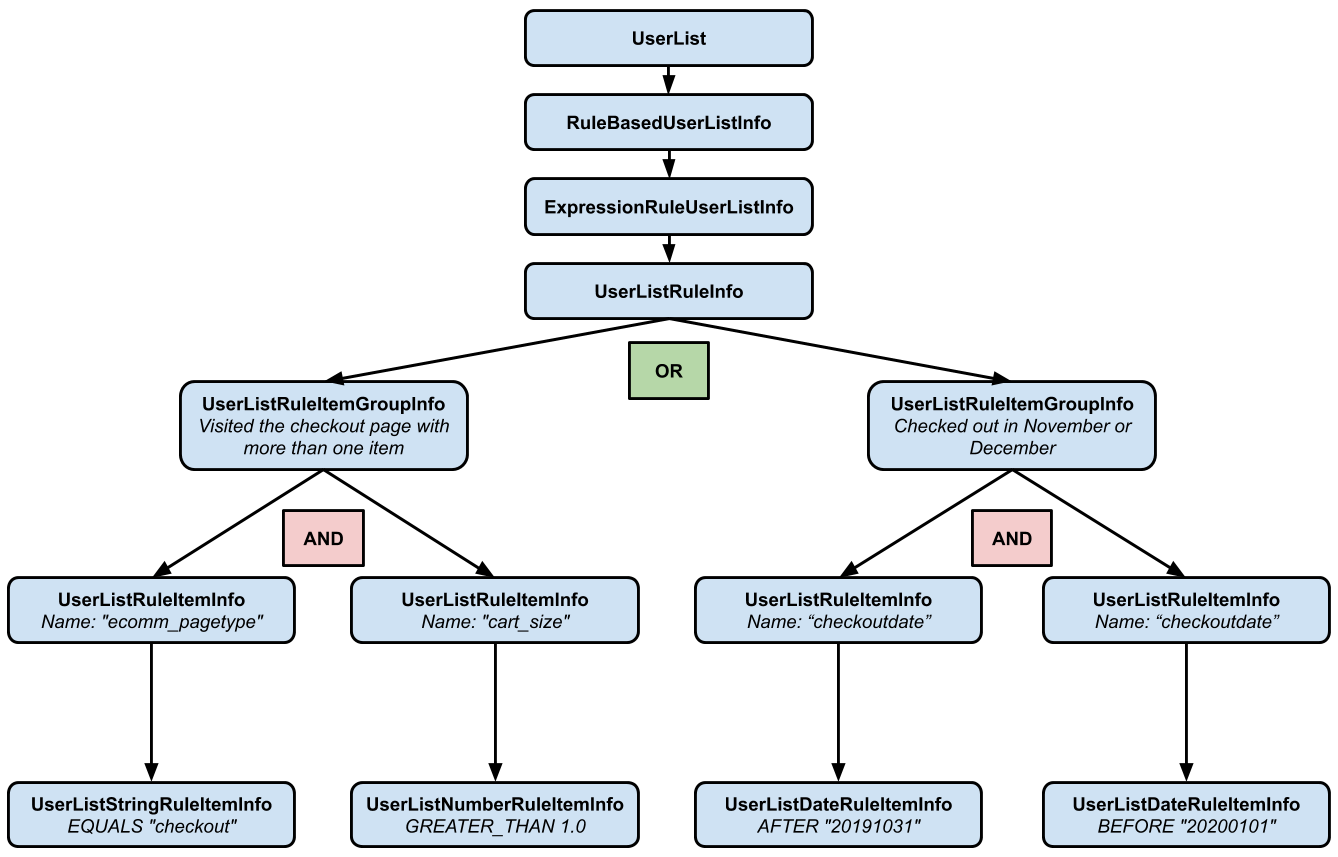ユーザーの次の属性をキャプチャするために、複数のカスタム リマーケティング タグ パラメータを設定したサイトがあるとします。
event- サイトのページのカテゴリ(購入手続き、カートなど)。cartsize- ユーザーのショッピング カート内のアイテム数。checkoutdate- ユーザーがチェックアウトした日付。このパラメータは、ユーザーが実際に購入手続きを完了した場合にのみ設定します。
ユーザーがショッピング カートに複数の商品アイテムを入れ、購入手続きに進んだ場合に、広告の表示回数を増やすことにします。また、11 月と 12 月にサイトで大規模なセールを実施する予定があるため、セール期間中に購入手続きを行うユーザーもターゲットに設定します。
このようなユーザーをターゲットに設定するには、次のようなルールが考えられます。
- 購入手続きページにアクセスし、かつショッピング カートに複数の商品を入れていたユーザー
- 11 月または 12 月に購入手続きを行ったユーザー
ユーザーがカテゴリ 1 またはカテゴリ 2 に該当する場合に、特定の広告グループやキャンペーンの入札単価を 25% 引き上げることができます。
オブジェクト
ルールベースのユーザーリストの構造を見てみましょう。ルールに基づくリストは、Google Ads API では rule_based_user_list として表されます。
次の図は、このユースケースの rule_based_user_list が完了した後の状態を示しています。


